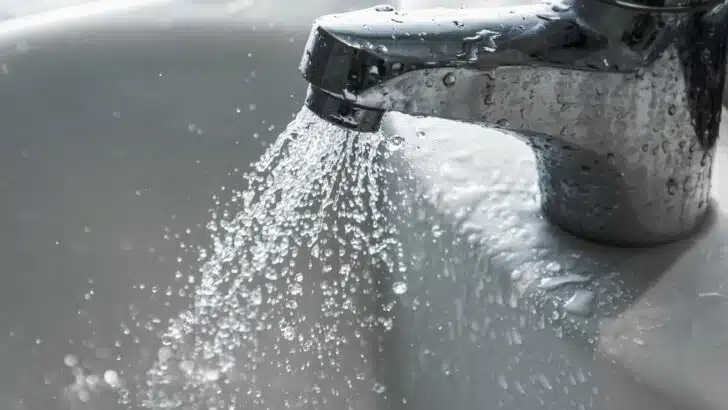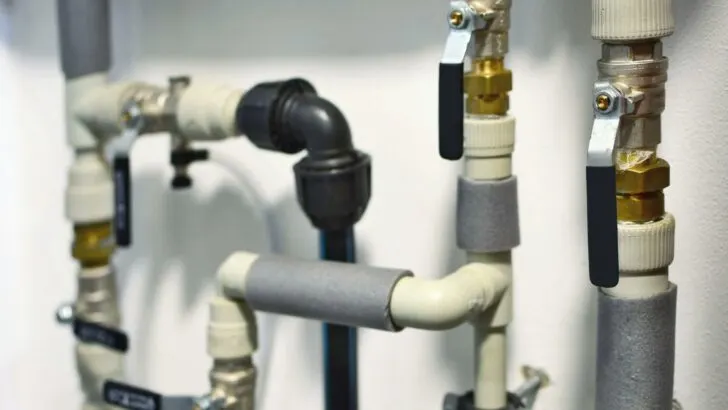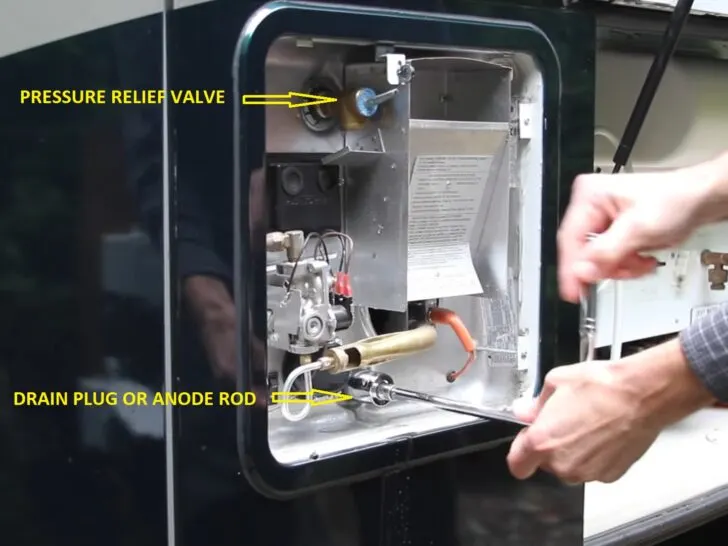Air in water lines is not an uncommon problem, but if the plumbing system in your RV has this issue, you’ll want to fix it as soon as possible.
While air pockets in water lines don’t present a particularly urgent issue, an RV that has air in the water pipes is a nuisance and could potentially burn out your water pump.
So, today we’re going to tell you how to deal with air bubbles in your water system so that you’ll be well-prepared if you ever encounter this problem.
What Are the Symptoms of Air in a Water System?
Air in water lines can present itself in a few different ways. Let’s take a look at the things that might alert you to air in your rig’s water system.
Loss of Water Pressure
We’ve written about low water pressure in an RV before, but one thing we didn’t mention specifically in that post was the possibility of air in the plumbing system being the cause of low water pressure.
It’s possible that if you’ve noticed a loss of water pressure in your RV, you could have air in your water lines.
Water Hammer Noise
Air in a plumbing system often presents itself as a noise that sounds like pounding. This can often be attributed to something known as “water hammer”.
Water hammer can occur in any plumbing system where water supply valves control the flow of water.
So if you’ve got noises coming from your pipes, it’s possible that you have air in your water lines.
Sputtering Water

If water sprays or sputters out of the faucet, this could be symptomatic of air in your RV water lines.
Air in water lines can cause water to sputter or spray as it comes out of the faucet. This can have other causes (just as the previous two symptoms may), but water sputtering or splashing out of the faucet may be indicative of air in your RV’s plumbing system.
What Causes Air in Water Lines?
Aside from being introduced by disconnecting and re-connecting to city water when hooking up at an RV park (or when switching between city water source and your onboard water pump), air in your plumbing system can result from any of a few different issues.
Water System Maintenance
If someone has turned off the water to your plumbing system to perform maintenance tasks or to repair another issue, air may have entered the system.
When the water supply is cut off, air can enter a plumbing system.
This can be very easy to resolve, sometimes by simply running a faucet for a minute or so, though this is not always the case.
Leak or Hole in the Plumbing System
If there’s a leak somewhere in your RV’s hot and cold water pipes preventing water from flowing normally, air can enter or become trapped in the plumbing system.
Leaking or Damaged Valve
If a valve within your RV’s plumbing system is leaking or damaged, this can also cause air pockets to eventually build up in the system.
For example, this could occur if an RV’s plumbing hasn’t been properly winterized and a valve (or pipe) cracks in the cold. (See our RV winterizing tips!)
If springtime comes and you de-winterize your rig and your water pump keeps running, you may have a cracked, leaking, or otherwise damaged valve somewhere in the system, and this can possibly introduce air into the system (and cause water damage from a leak).

RV pipes, valves, and fittings can crack in cold weather if a rig isn’t properly winterized.
Loose Connections
Sometimes the culprit is simply a loose connection somewhere in your RV’s plumbing system.
Loose connections are generally found where pipes and valves are connected.
Faulty Water Heater Thermostat
A faulty water heater thermostat can cause hot pockets to form. This can, in turn, trap air in the plumbing system.
If your water is too hot and/or you hear a gurgling sound at your faucets, the issue could be a faulty water heater thermostat.
Faulty Pressure Relief Valve
There’s an outside chance that the source of air in your water lines could be related to a bad/leaky water heater pressure relief valve. If this is the cause, you’ll likely have the issue with sputtering only when running the hot water at the faucet.

In this photo, you can see the pressure relief valve noted at the top and the anode rod at the bottom. Note that this is a Suburban water heater. An Atwood RV water heater has a pressure relief valve like this one but has a drain valve/drain plug instead of an anode rod. From the outside of the hot water tank, these two items look very similar.
How to Bleed Air from RV Water Lines
There are a couple of ways to bleed the air from your RV’s plumbing system.
Using Municipal Water System
If you have access to a municipal water system at your home or elsewhere, this will be the quickest way to bleed the air from your RV’s water lines.
- Connect your RV’s plumbing system to a pressurized water system such as the one at your home.
- Open the pressurized faucet (where you’ve connected the hose to your home).
- Open all of the faucets inside your RV. Don’t forget the shower(s) and any outside faucets.
- Once the water pressure returns to normal and there’s no sputtering/splashing at any of the faucets, turn them all off and then disconnect the pressurized water source.
- Turn on your RV’s water pump. The pump should prime itself and start working properly.
- Once the pump stops running, open each faucet and allow water to run, then turn it off and test the next one.
Using Water from Fresh Water Tank
If you have no choice but to use water from your fresh water tank to bleed the air out of your RV’s water lines because you can’t connect to a pressurized system, take the following steps.
- Fill your fresh water tank if possible.
- Turn on the RV’s water pump. This will pressurize the water system.
- Open the faucet in the RV that is farthest from the fresh water tank. Let the water run for a while until the water stops sputtering and flows freely. Turn off the faucet.
- Repeat with the other faucets until they each run smoothly.
Note: Try not to do this when you’re boondocking unless it’s absolutely necessary because it will use a lot of your precious water supply. If possible, get to a place where you’ll be able to refill your fresh water tank after bleeding the system.
How Do I Bleed Air from an RV Water Pump?
If there’s air trapped in your RV’s water pump, you’ll use the same simple method noted above to bleed the air from the pump.
- Turn on the water pump and let it run for a bit to allow the water in the system to pressurize.
- Turn on the faucet that is located furthest away from the water pump.
How to Bleed an RV Water Heater
If you’ve completed all of the above and you still have air in your RV’s water system, there’s a small chance that you may have air bubbles in your water heater.
Take the following steps to bleed your RV’s water heater:
- Turn OFF your RV’s water heater.
- Wait an hour or so to allow the water in the tank to cool down.
- Shut off the main water supply.
- Open a faucet inside your RV to relieve the pressure in the system.
- Flip the pressure relief valve on your water heater and allow any water to be released.
- Close the pressure relief valve.
- Close the open faucet inside the RV.
- Turn your main water supply back on and allow your hot water tank to fill.
- Once your hot water tank is full, turn the water heater back on.
How to Flush and Clean an RV Hot Water Tank
If you’d like to watch us flush and clean our Atwood hot water tank, watch these two videos.
The first video will show you the entire method, and the second video will show you a surprise!
Geek Out with Us Every Week
Join our newsletter to learn about all things RV-related. Every week we offer free tips, tricks, product reviews, and more to our online community of RVers. So, whether this is your first time on the road or you’re a seasoned expert, we’d love for you to geek out with us!

